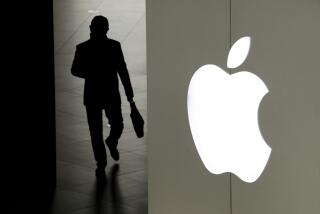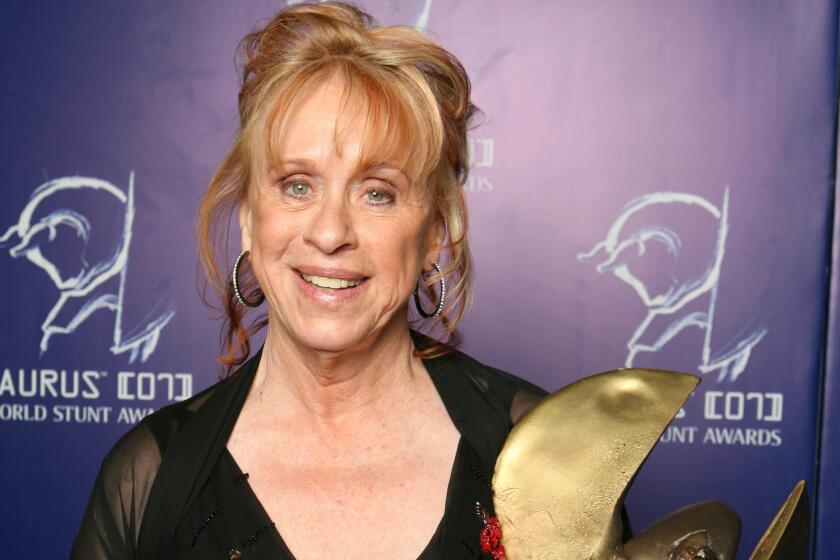Review: BlackBerry Z10 delivers, but doesn’t stand out [Video]
The BlackBerry Z10 went on sale Friday in the U.S., and BlackBerry loyalists will like the improvements that come with the new smartphone and operating system.
But for consumers who are looking for an alternative to Apple’s iPhone or Samsung Galaxy S III, the Blackberry Z10 is not it.
First, though, let’s talk about how the Z10 is much better than its Blackberry predecessors.
Formerly known as Research In Motion, Blackberry has upgraded its hardware to match today’s standards for smartphones. The Z10 has everything users expect from a smartphone today: an excellent HD screen, powerful processor, a top-notch rear camera and a front camera for video chatting, LTE cellular connectivity and a large amount of storage. It also doesn’t hurt that BlackBerry 10, the Canadian company’s all-new operating system, has been loaded with a lot more apps than BlackBerry users had access to before.
PHOTOS: Top 10 must-have smartphone apps
The very design of the Z10 is also much improved. The new device looks a lot like an iPhone, but is slightly larger and still holds onto BlackBerry identity with features like a flashing red light for when users have new emails. The phone is thin, light and sturdy, and its 4.2-inch screen with a 720p HD resolution and high 356 pixel per inch density looks great.
The Z10 features an 8-megapixel rear camera, which takes good pictures that users can proudly upload to Facebook or Twitter and also records solid 1080p HD video. The same goes for the 2-megapixel front camera, which also shoots 720p HD video. The camera’s software offers users a variety of features and options. I particularly liked a shooting mode that will take a flurry of pictures right after each other. That lets users take pictures then choose the one they like best. This is helpful for group photos or pictures in crowded places.
Inside, the BlackBerry Z10 runs on a powerful 1.5GHz dual-core processor and comes with 16 gigabytes of storage that can be further expanded through a microSD slot found inside the phone’s back cover. The phone can also be connected to TVs and monitors using an HDMI port located on its side.
As for the software, BlackBerry 10 adds a number of new features that users will appreciate. BBM, the company’s proprietary messaging system, still exists but now also features BBM video, letting users video chat the same way Apple iPhone users do with FaceTime.
The highlight of the entire new operating system, though, is BlackBerry Keyboard. As users type, the keyboard tries to guess what they want to say next, and it’ll show various words on top of the letters it thinks users are about to tap. If the device shows the word users want, they can simply flick the word upward, and it’s added to the text they’re typing. As the feature is used more, the keyboard will supposedly get better at guessing the word users type.
One other feature that might be useful but I didn’t get to try out was BlackBerry Balance. That feature lets users keep both personal and work accounts, letting users’ separate the different sides of their lives. This makes it easy for IT departments to get into users’ work accounts and take actions, such as remotely wiping information, without affecting the data that’s on the personal side of a user’s BlackBerry Z10. Unfortunately, enabling BlackBerry 10 requires that a user’s employer have BlackBerry Enterprise Services 10. This might keep many new users from being able to try out this feature until their company upgrades to BES 10. That’s why I couldn’t.
But not all is perfect in BlackBerry 10. The operating system suffers from many of the challenges new platforms all deal with. It can be slow at times, and it’s immediately obvious that some features could be better if done slightly differently.
PHOTOS: Top smartphones of 2013
For example, BlackBerry Hub is another new feature on the device that is a neat idea in theory but could easily be improve. Hub aggregates users’ messages, emails and social network notifications and pulls them into one place. The feature can be helpful, but the look is stale and it can take too many finger swipes to get to it and move around in it.
The slight frustration with Hub, though, don’t compare to those of BlackBerry 10’s lock screen.
I handed the Z10 to some of my colleagues, and it took most of them a couple of minutes and a handful of hints before they finally figured how to unlock the device and start using it.
Users have to swipe upward from the bottom of the phone toward the top to unlock and start using the device. It’s not obvious to most users, and the screen doesn’t flash helpful upward arrows until after users swipe around aimlessly a few times.
Once past the lock screen, it’s also not obvious that users have to use that upward swipe motion to get back to the phone’s home screen after they open up apps. Users learn and remember the action after a while, but at first, with no home button or icon like the one on the iPhone and Android devices, it can be a little confusing.
Another issue is its camera quick-launch icon. Users have to hold down on the icon for a few seconds before the camera actually launches and makes it possible to take pictures. Normally a few seconds isn’t bothersome until the user wants to take a photo quickly. BlackBerry 10’s quick-launch is much slower than the quick-launch functions found on nearly all other mobile operating systems.
The lock screen also shows users how many emails, texts and social network notifications they have with helpful icons, but it’s not possible for users to simply tap on those icons and go directly from the locked screen to the corresponding app. Instead, users must unlock the screen and head over to BlackBerry Hub.
PHOTOS: Tech we want to see in 2013
It’s also important to note that although BlackBerry 10 delivers many more and better apps than before, it’s still missing quite a few important ones. There’s no Pandora, Spotify, Kindle, Netflix, Skype or practically any of Google’s apps. Of the apps that do exist, they launch and load slower than they do on other operating systems. Instead of simply opening when users tap on them, apps first direct to BlackBerry 10’s recently used apps screen before they finally launch. And even then, many of the apps I tried, such as Twitter, took longer to load than they do on other smartphones.
One highlight with the BlackBerry 10 was the video games. There are a lot of games, including many popular ones such as Angry Birds. There are also intense titles like the racing game Asphalt 7, which played great. However, it took Asphalt 7 a while to load.
All in all, the Z10 is a perfectly good phone that consumers who purchase it will be happy to own.
But without a stand-out feature and at the same price as most other flagship smartphones, the BlackBerry Z10 may not be a worthy alternative to the iPhone 5 or the upcoming Samsung Galaxy S 4.
The BlackBerry Z10 can be purchased from AT&T; now. Verizon will start selling the phone, and an exclusive white version of it, on March 28 while T-Mobile has also said it will carry the device and have it available before the end of March. AT&T; and Verizon will sell the phone for $200 with a two-year contract.
ALSO:
Google Chrome turns websites into marble maze game
For its 7th birthday, Twitter looks back in video timeline
Apple’s patent for a cat-like tech could one day save your iPhone







